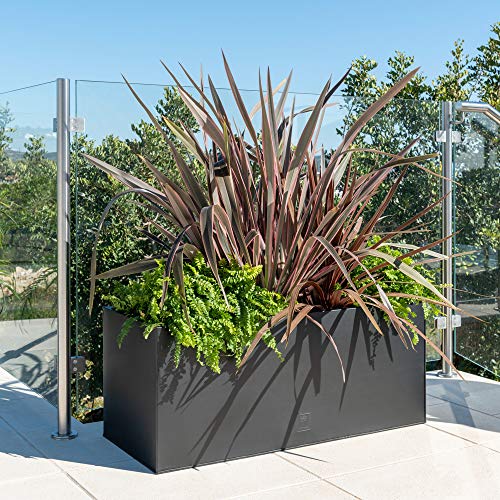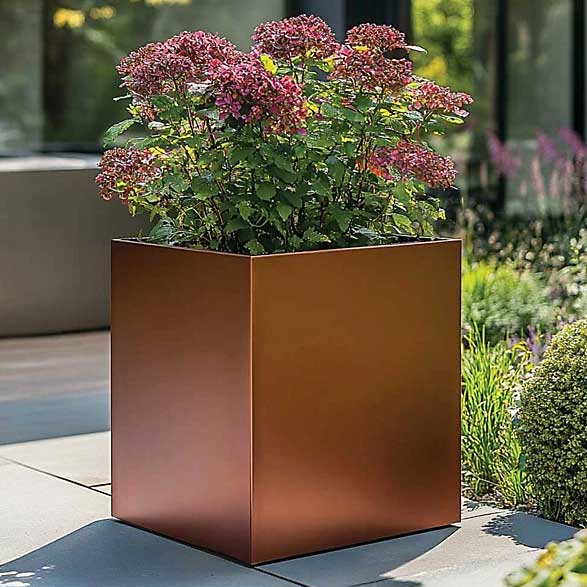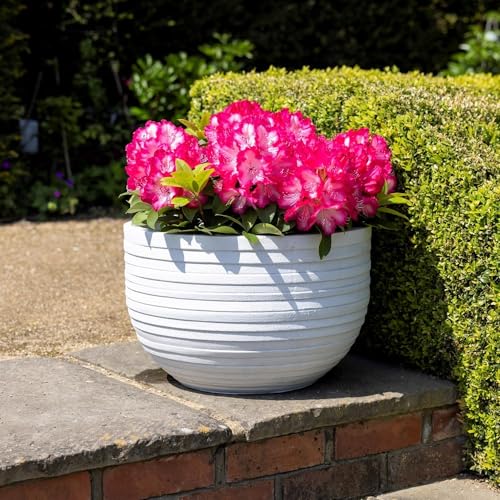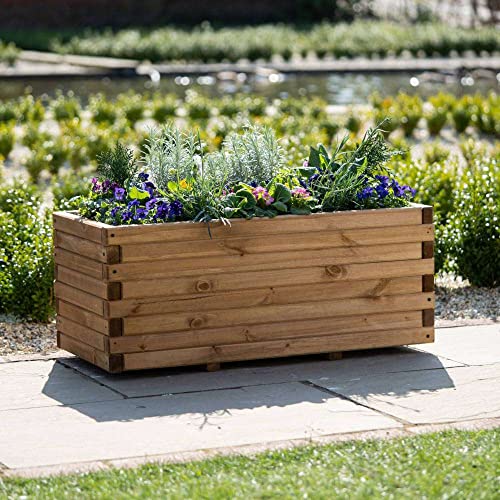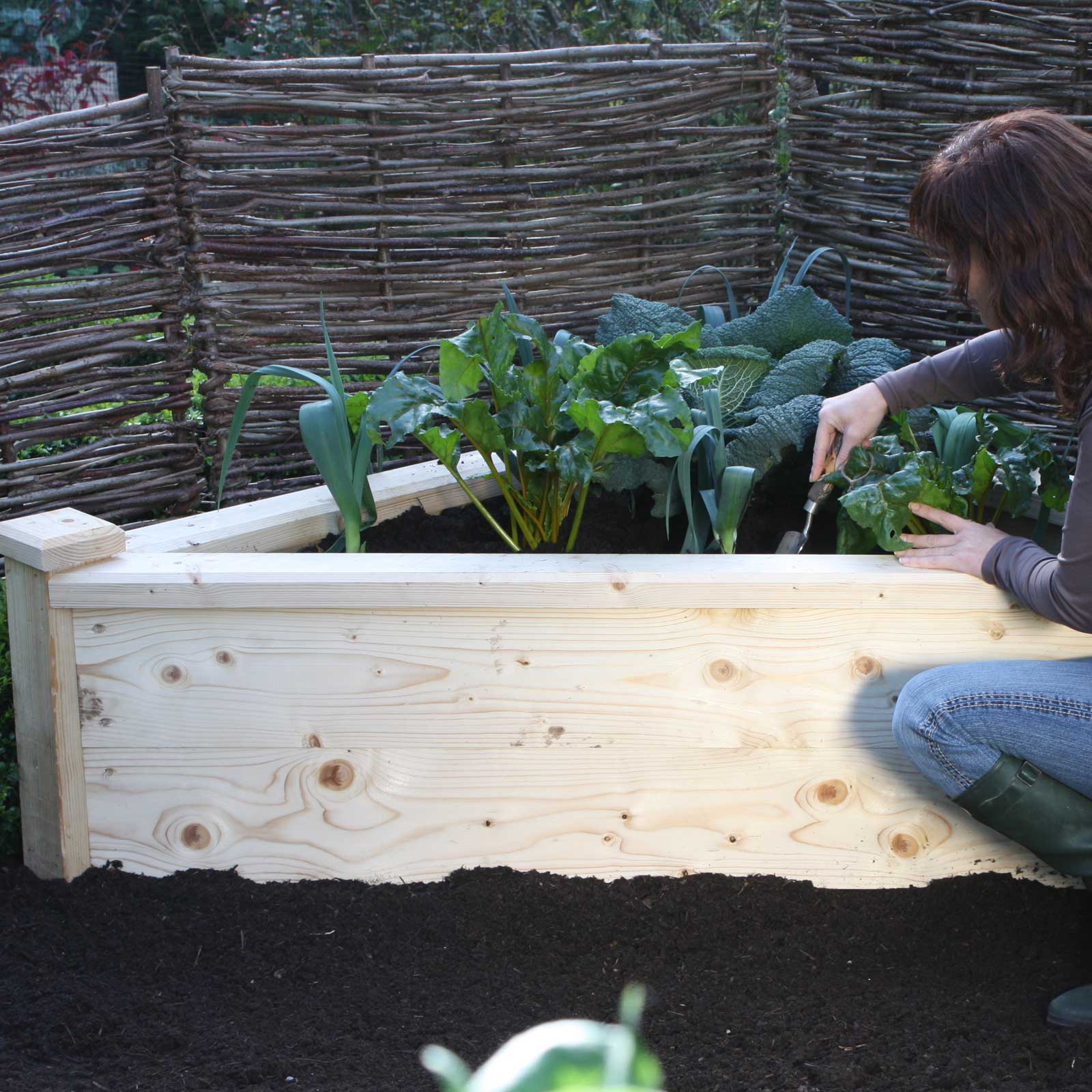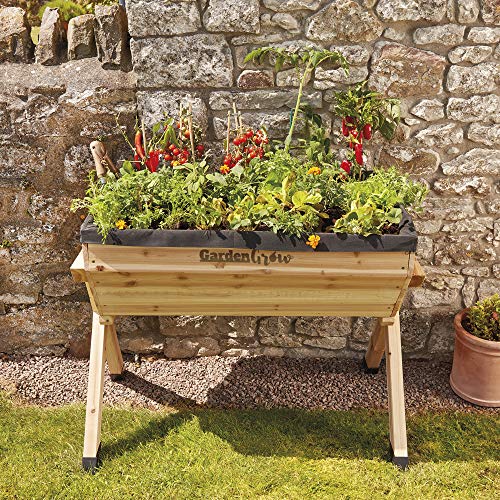14 garden planter ideas to instantly update your outdoor space with scent and colour
Flexible and low maintenance, these garden planters are perfect for creating maximum impact with minimal effort
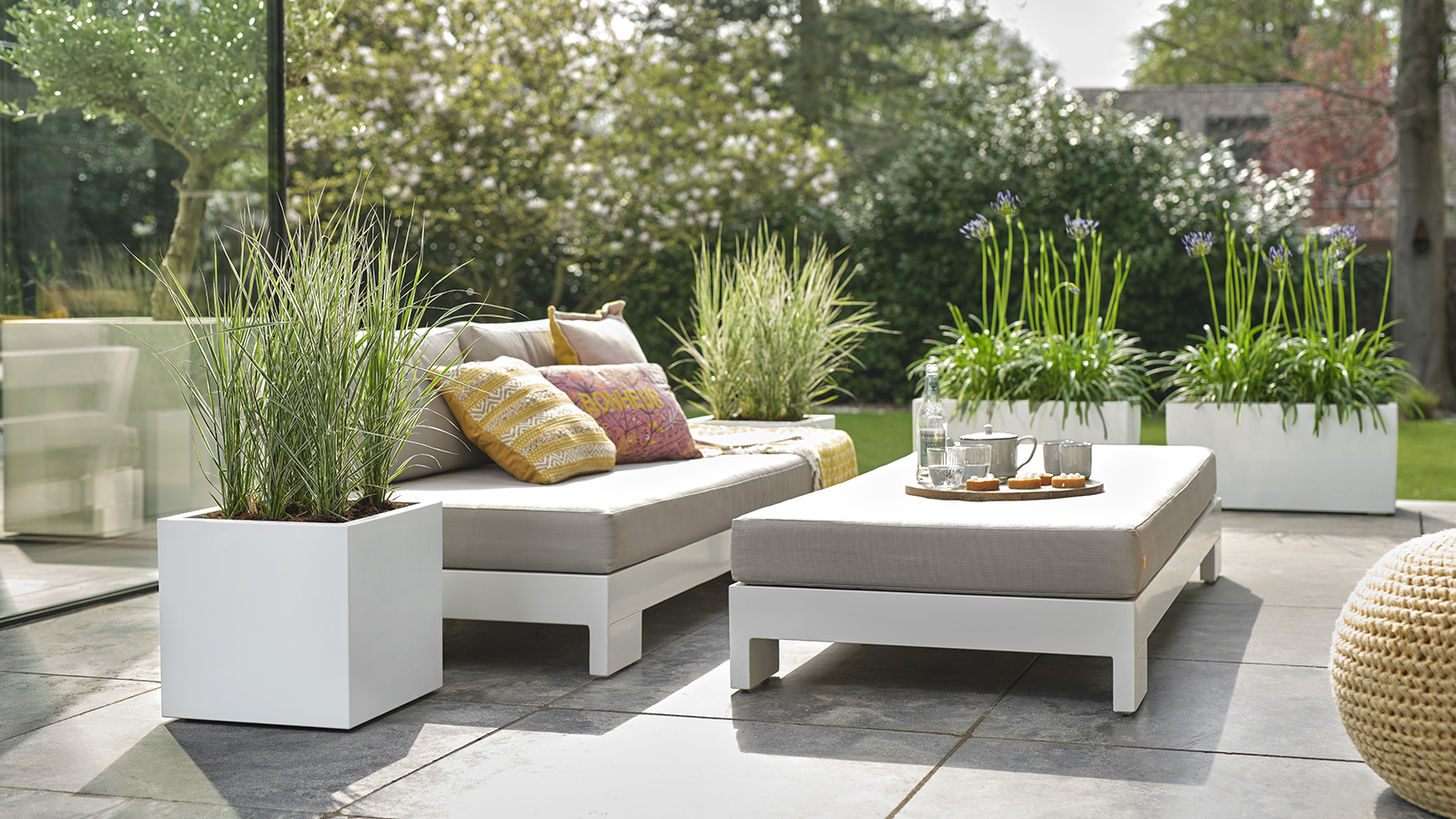
The most successful garden planter ideas will add instant impact and up the foliage and flower interest in your garden.
Unlike growing in beds and borders, you have greater control over the soil conditions in pots, meaning that you don't have to make plant choices based on pH or poor soil conditions. And due to the popularity of container gardening, plant nurseries have developed pot-friendly species for almost every plant variety you can imagine, meaning the choice is vast.
Containers are a 'moveable feast' – a nugget I always offer up when giving garden advice. Containers can be used to zone your garden landscaping, plants can be swapped in and out when seasons change, and you can build up your arrangement by adding more planters as and when.
1. Choose the right-sized garden planters
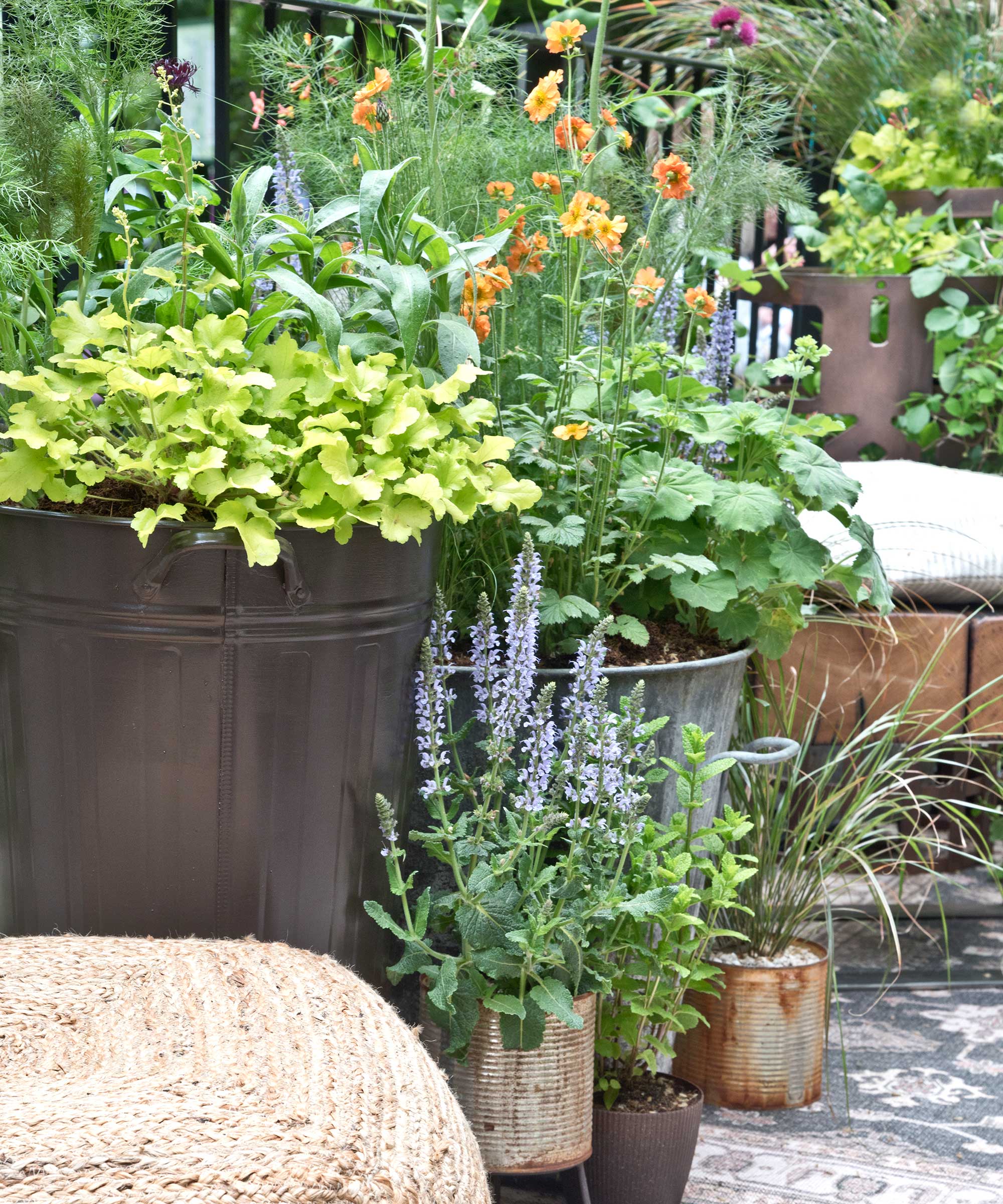
The success of your low-maintenance garden planter ideas depends on ensuring that you choose the right sized pot to house the eventual height and spread of your plant, so check plant labels.
If growing multiple species in the same pot, select those that favour similar growing conditions, such as plants for sun or shade plants. A multipurpose compost is often sufficient for most plant varieties but some plants will benefit from being enriched with organic matter.
Most importantly, garden planters must have drainage holes so moisture can escape, otherwise, you'll almost certainly experience root rot. Pot-grown plants can't draw moisture up from the soil, so consider garden irrigation if you are someone who often forgets to water.
Boost your options with these versatile planters
2. Match your containers with your seating
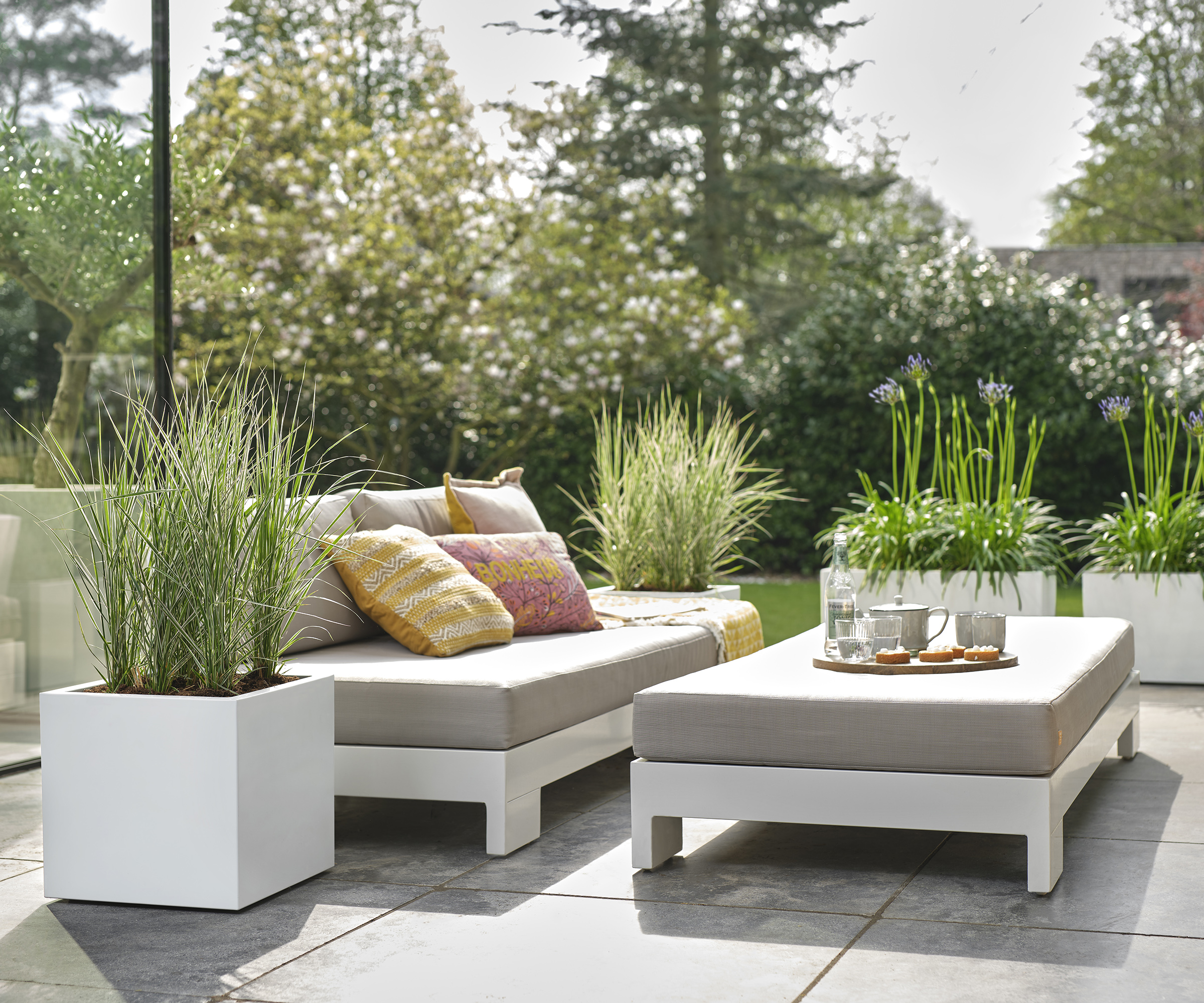
"Planters are an easy way to add flowers and foliage to your garden design and bring height to a flat garden. So, they’re ideal for perking up patios, decks and lawns. Tall planters with shrubs and grasses work well to add privacy to seating areas," says Fiona Jenkins, garden expert at My Job Quote.
Bring your dream home to life with expert advice, how to guides and design inspiration. Sign up for our newsletter and get two free tickets to a Homebuilding & Renovating Show near you.
When it comes to style, choosing containers which suit your surroundings is key. A modern garden design will benefit from smooth geometric shapes in neutral colours, whilst more cottage styles will favour terracotta, wood or stone.
Some products such as Elho vivo next pots available at Amazon, come on invisible wheels and have an integrated water reservoir to make your garden planter ideas even more low maintenance.

A landscaper and gardening expert with over 25 years of experience in the industry. Currently Fiona works for MyJobQuote as their resident expert on all things gardening.
3. Go big and bold with statement blooms
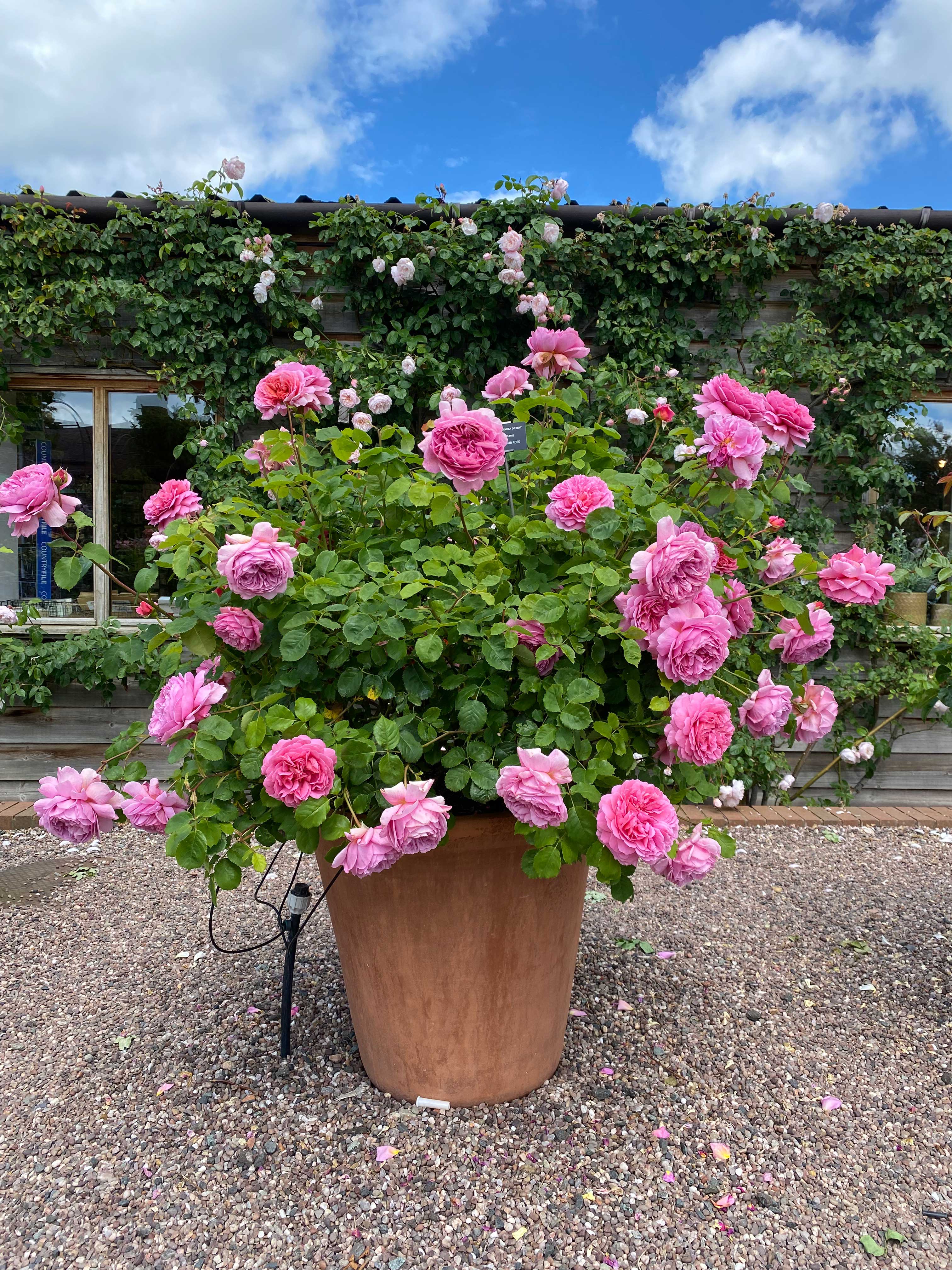
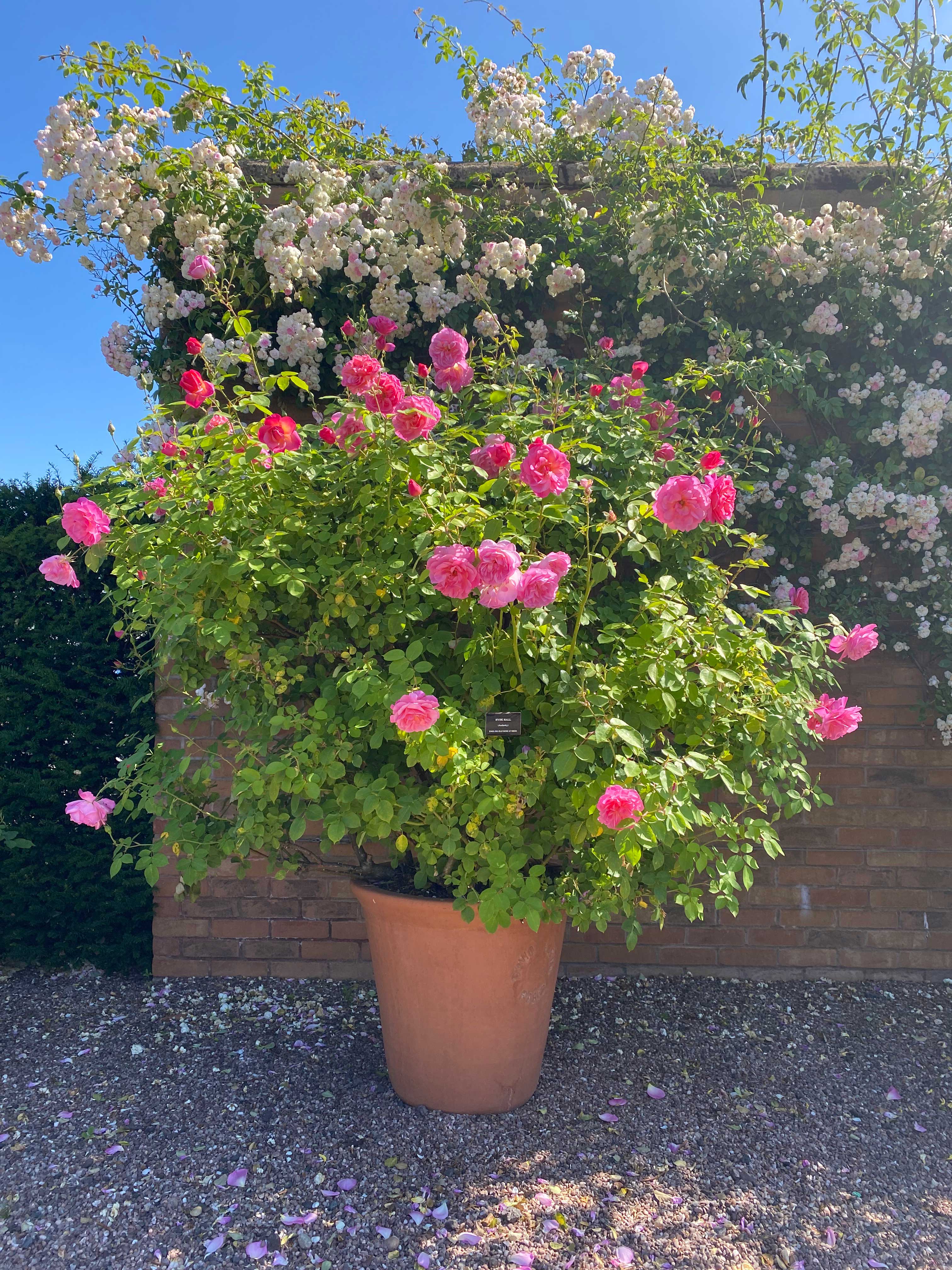
Ideal for making a statement in any space, roses can make a stunning addition to your patio ideas when grown in a large container. They’ll give you several months of vibrant summer colour, attract lots of wildlife and provide you with some incredible scents, making them an ideal choice for a sensory garden.
Most roses will grow best in a spot that gets several hours of sunshine a day, and it's important to make sure that your container drains well. Try to avoid placing your container in a particularly exposed spot as windy conditions can damage the flowers and prevent optimum blooms.
If you’re worried about having plants with lots of thorns in areas where there might be children or pets, look for English Rose varieties that are less thorny, such as Kew Gardens from David Austin Roses, available at Dobbies.
As with most plants in containers, your roses will typically need watering more than those planted in the ground. According to the experts at David Austin Roses, in the summer months a newly planted rose should be watered every other day until it is well established.
A statement display like the ones pictured would also make a brilliant addition to your front garden.
4. Create a succulent garden planter
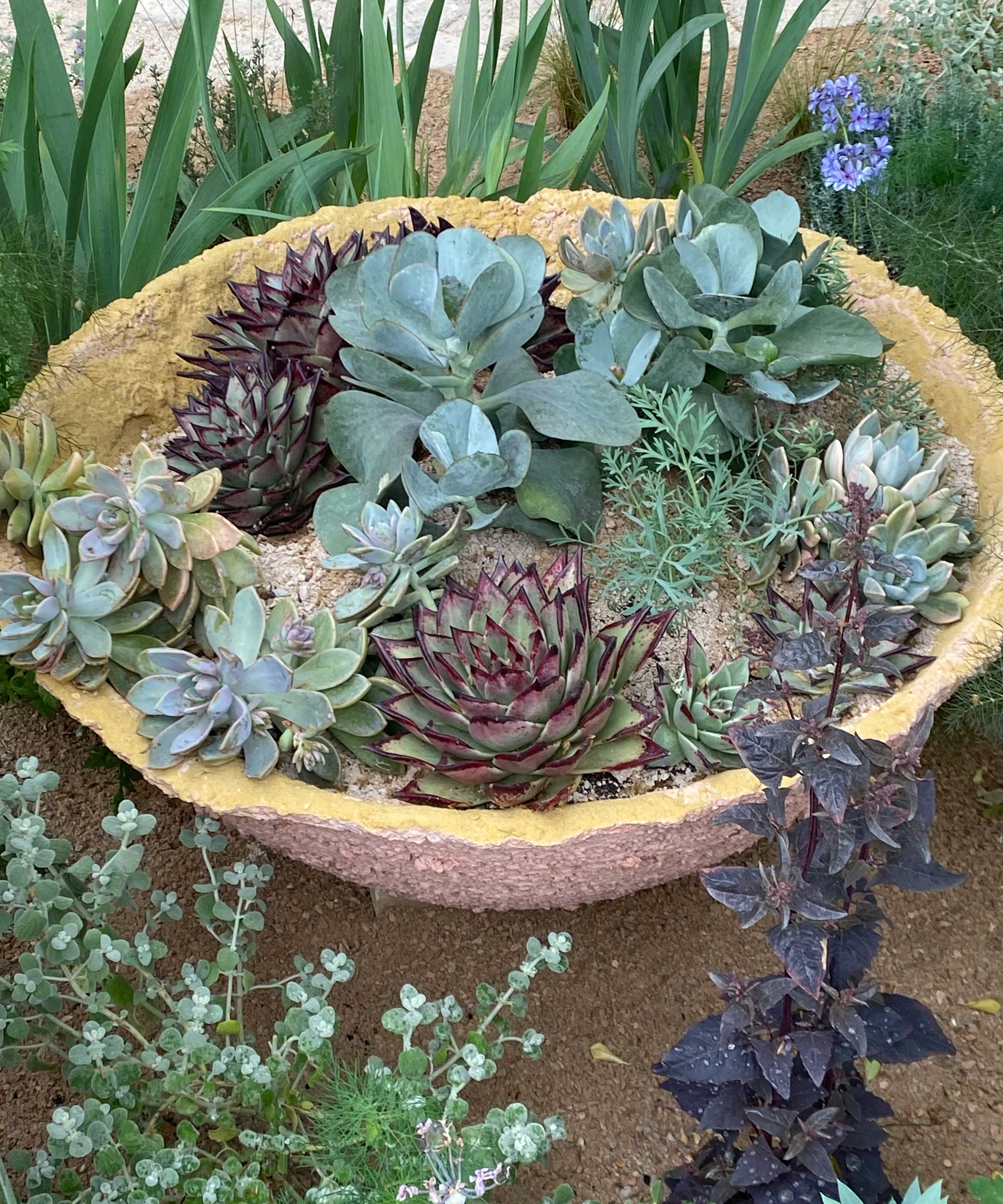
With increasingly warm summers and limited rainfall, plants that typically thrive in Mediterranean regions are becoming more commonplace in the UK. A shallow container filled with full hardy succulents can make a striking addition to your garden space.
“I have two or three terracotta containers filled with succulents and use them as the centrepiece for my outdoor dining table,” says Beth Murton, Homebuilding & Renovating’s editor.
“You need to ensure your container has adequate drainage as succulents aren’t a fan of excess moisture and waterlogged soil will quickly kill them. It’s a good idea to incorporate some horticultural grit in your compost to keep the soil well drained."
This Melcourt horticultural potting grit from Amazon is suitable for cacti, succulents and alpines and can also be used as a top dressing for your containers to give them a smart finish.
5. Attach a wall planter for vertical interest
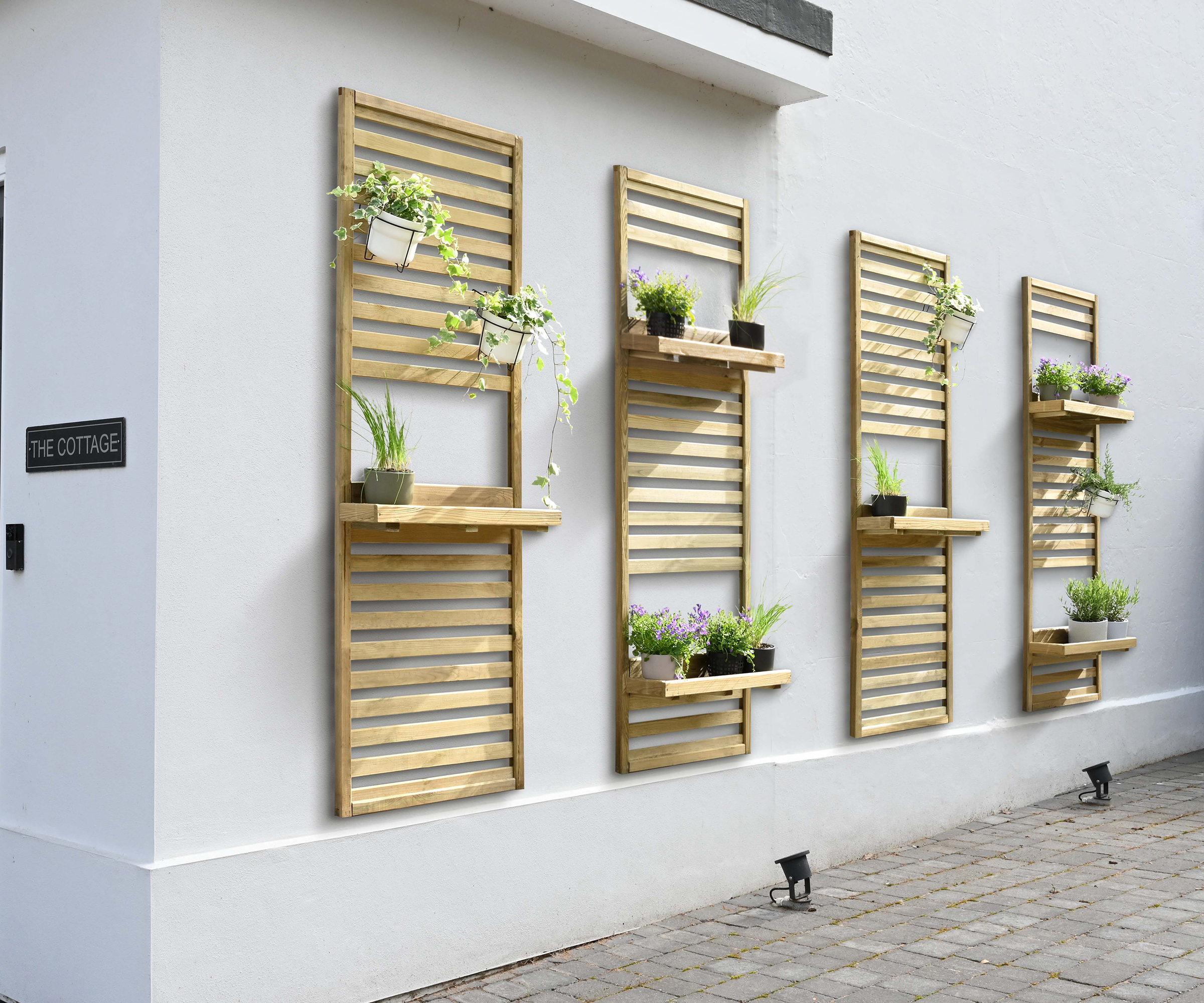
For small gardens, utilising vertical spaces can be a clever technique for refreshing a tired wall without taking up valuable real estate.
“By bringing your walls to life with pots of pretty plants, you can take a boring and dull small space, and turn it into a thriving and lively oasis," says Patty Willems, plant expert at Elho.
“There are many ways to get growing vertically – pallets and old tin cans make for a rustic and thrifty look, or you can find many space-saving solutions in the garden centre."
Products like the Elho green wall rack can be easily fixed to a garden wall or fence.
6. Choose ornate metal planters for traditional gardens
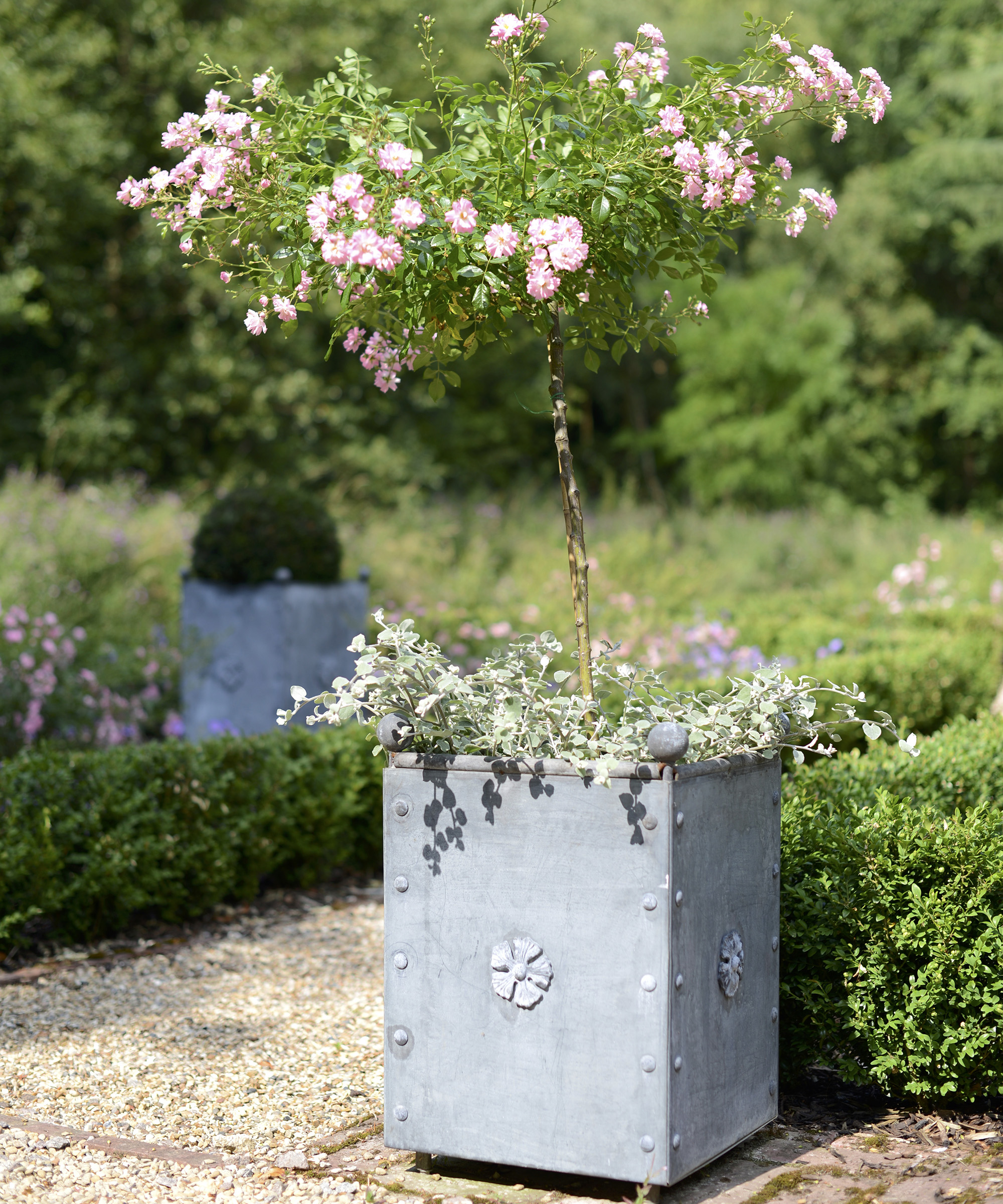
"Perfect for topiary, roses, shrubs or small trees, heavy-duty garden planter ideas look stunning next to front doors, on a terrace or in a herbaceous border," says Tim Dawson founder of artisanal planter company Arthur Jack & Co.
"Mixing plant types in one planter can create a visually appealing contrast. Combine tall plants like grasses or bamboo with trailing vines for a dynamic look. Bright colours can be achieved with colourful annuals such as petunias or geraniums."
"Smaller filler plants like alyssum or calibrachoa complement the main attractions. Choose varieties with delicate leaves for a softer touch. Evergreen foliage plants such as box shrubs maintain year-round interest," adds Arthur.
7. Group sets of planters together for impact
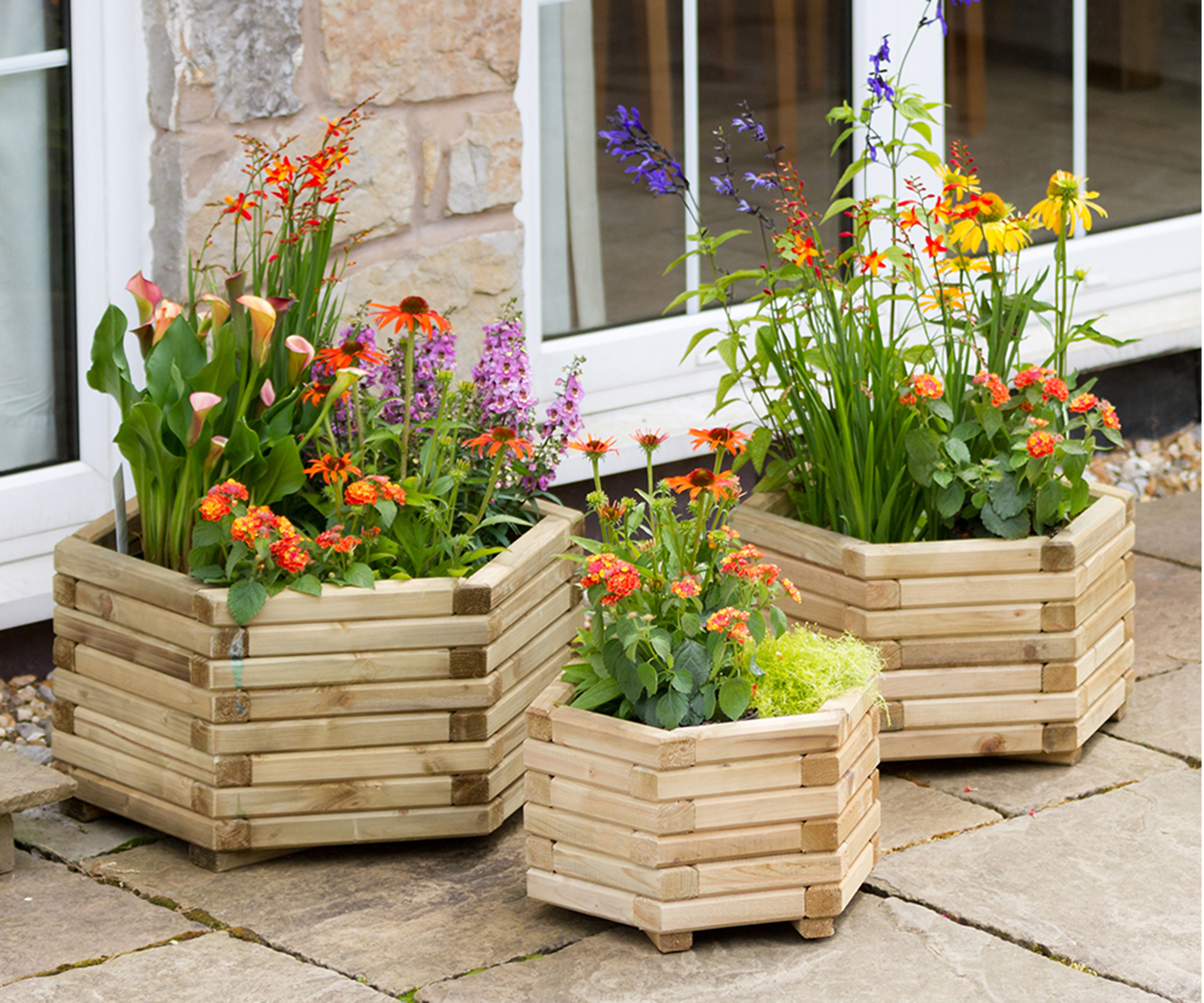
Grouping sets of planters together can add wow factor. Matching pots in sets of three are ideal for a balanced and cohesive arrangement, creating a mini-garden in themselves.
Products like these will help transform your space into an absolute haven of colour. "Simply plant with your favourite bulb varieties and later, a delightful show of summer bedding," suggests Katie Murphy at Zest Outdoor Living
"Timber planters are very popular as the natural material blends well with flowers and shrubs. But they can also be painted in different colours, so you can change their look very easily. Timber planters are fairly durable but you do need to keep them protected to prevent them from rotting," adds Fiona Jenkins.
8. Go bold with oversized planters
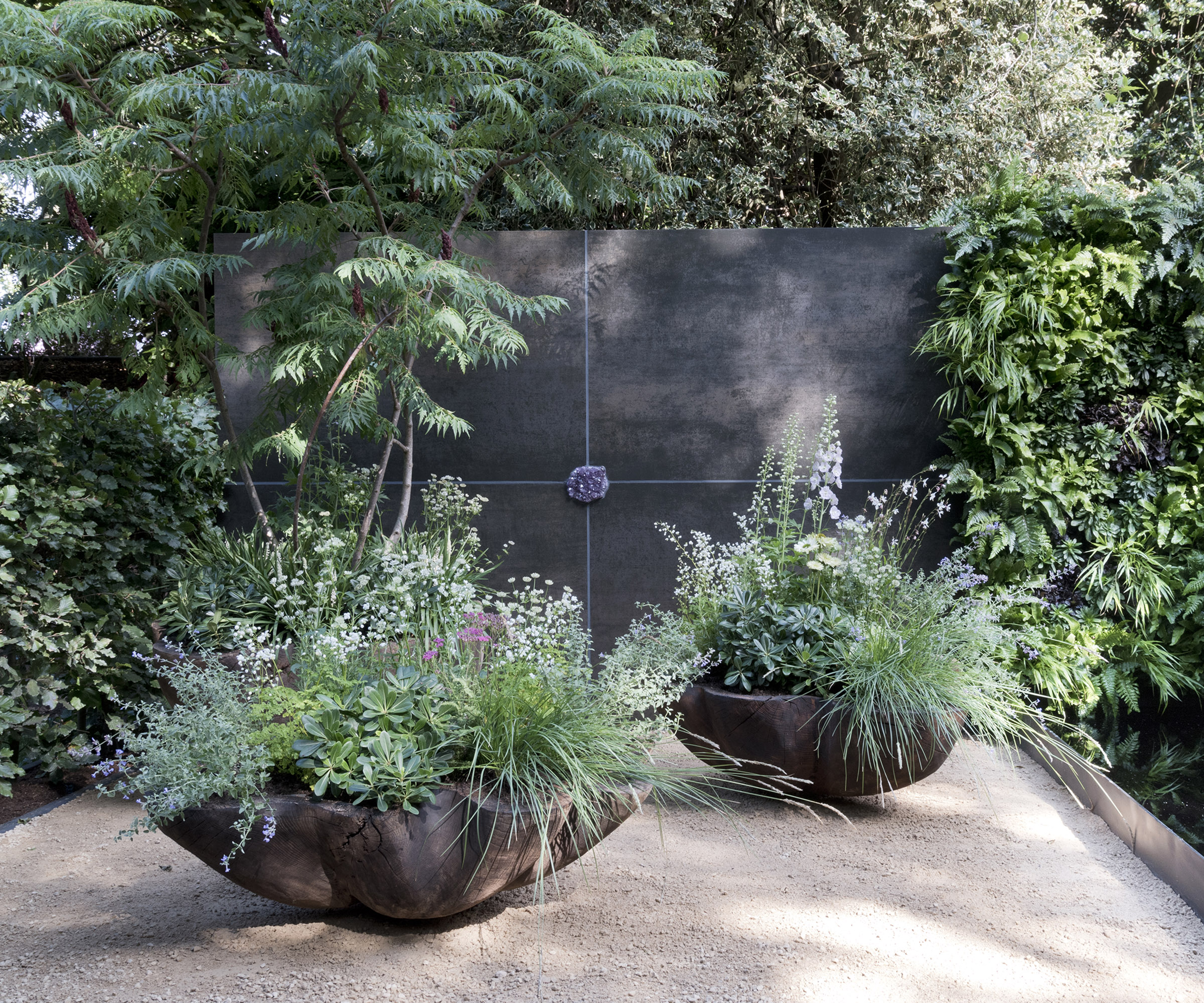
Planters themselves can have as much ornamental value as the plants within them and bare areas of the garden can be bolstered by one or two sculptural containers.
"Large planters can make bold statements in your garden by using oversized pots as backdrops to seating areas or balancing high walls," says Victoria Cummins, a Senior Editor at PlantWhisperer.
"Planters are incredibly versatile; they can add seasonal colour to your garden or create focal points. You can use them to define spaces by placing large planters as boundaries or focal points," she adds.
9. Use your container garden for growing edibles
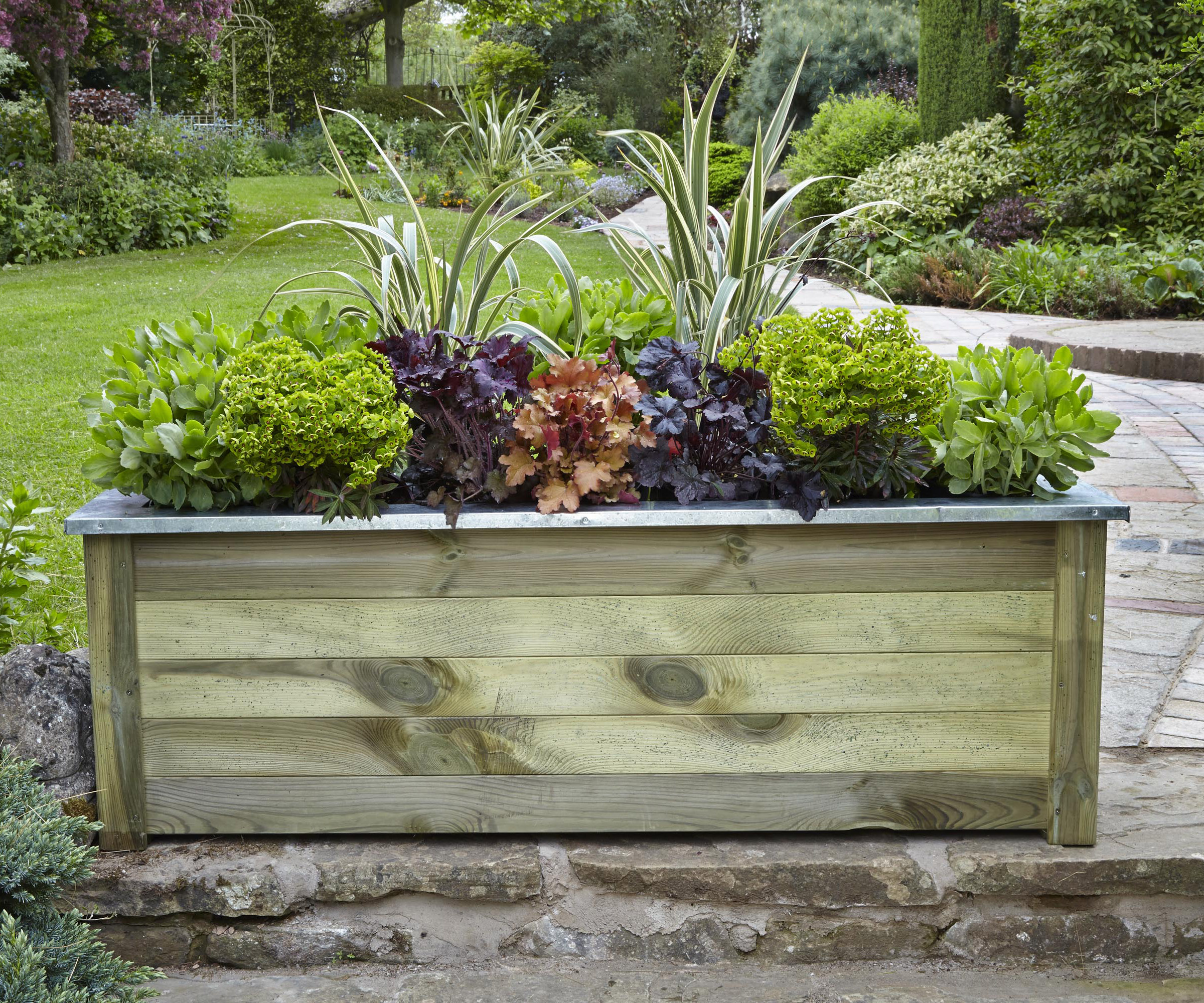
“Whether you want a garden awash with colourful blooms or want to adopt a more sustainable lifestyle by growing your own vegetables and herbs, containers can be a great way to achieve this," says Jenny Davis, Forest Garden’s Head of Marketing.
If growing fruit and veg it's best to opt for larger, deeper planters as opposed to shallower ones which are better suited to growing bedding plants. "Grow salad crops in a patio planter if you have at least 15cm of depth. Carrots and spring onions grow well together and do well in planters at least 30cm deep with good drainage," says Stephanie Harrod, founder of Harrod Horticultural.
"You'll be surprised how many delicious vegetables you can cram into a small space and an attractive vegetable garden planter can transform a barren patio. Salad such as lettuce, spinach or radishes could be the perfect option for your small planters, not forgetting herbs which can also give a decorative touch," says Stephanie.
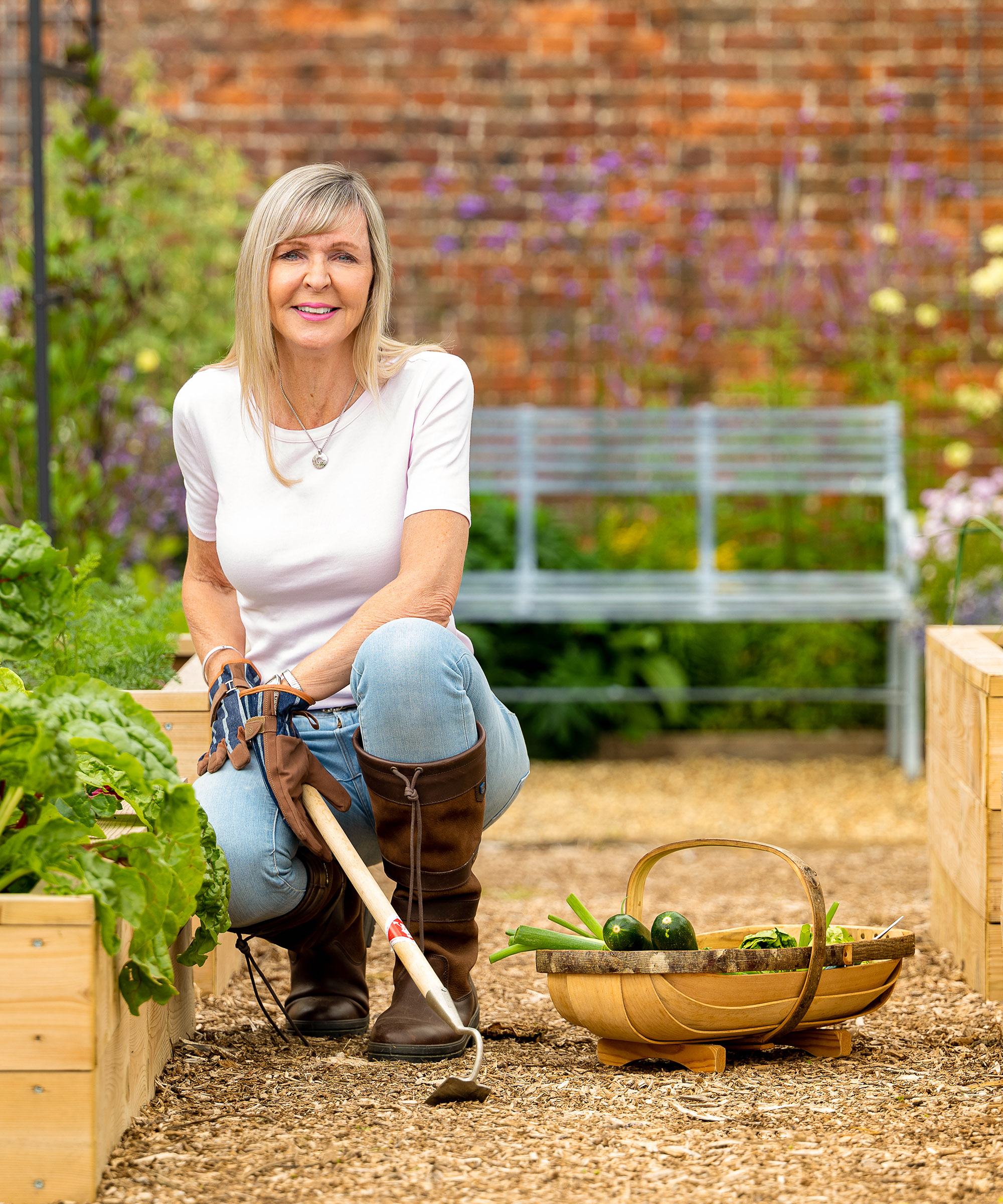
Stephanie is a keen gardener with a vision to transform outdoor spaces into havens of beauty and functionality by combining her love for nature with innovative design. Harrod Horticultural stocks a large range of raised beds to suit all garden needs.
Get growing with these vegetable garden planters
10. Or plant up a scent-filled herb garden in mini containers
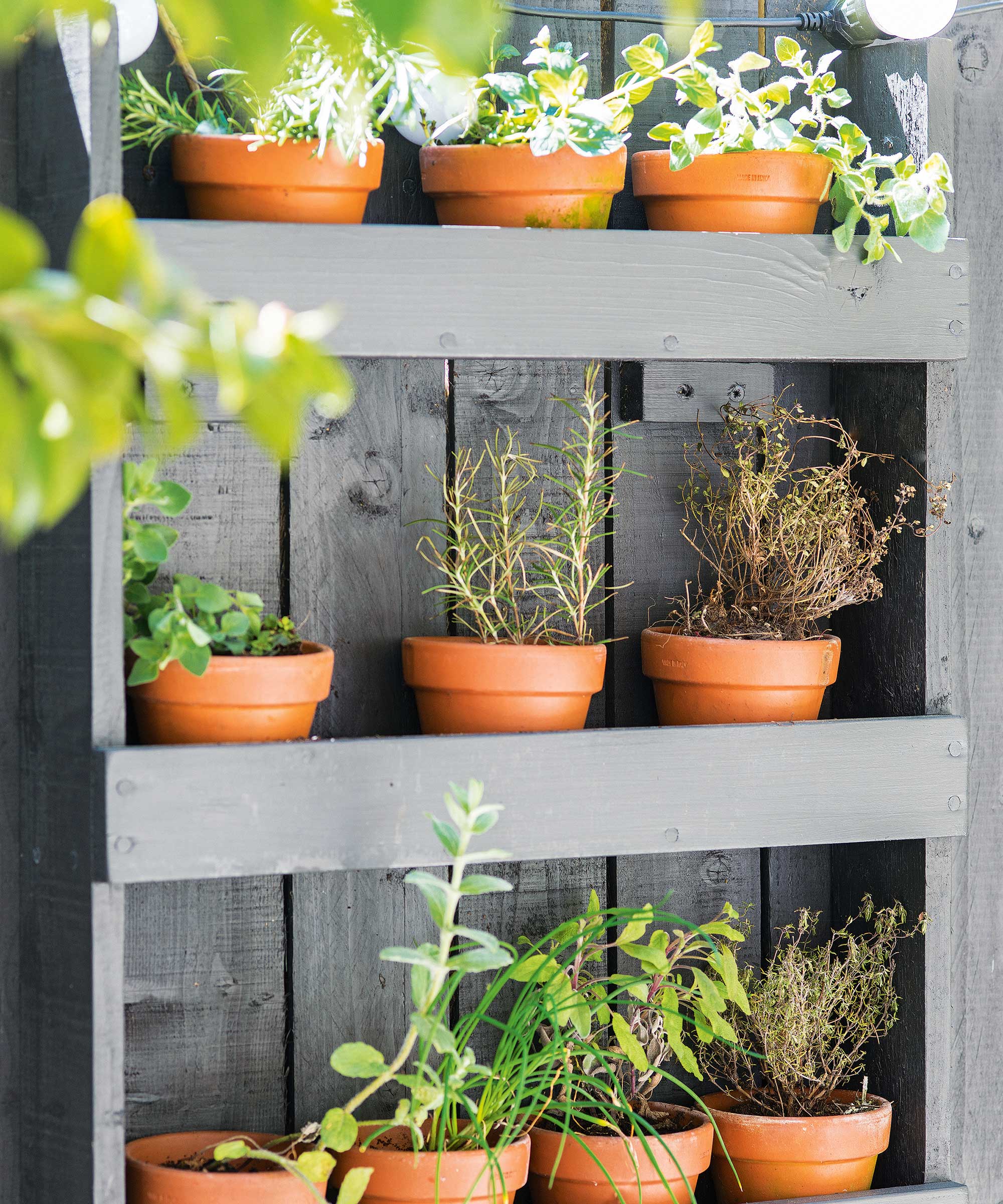
If you love cooking, having a selection of fresh herbs to hand is always a bonus, and this simple container gardening idea is easy to achieve with minimal effort.
This old wooden pallet has been transformed into a pretty display space for matching terracotta pots filled with herbs. A couple of coats of outdoor paint will keep the wood protected – Cuprinol Garden Shades in Silver Birch from B&Q is a similar colour to the one pictured.
Herbs such as sage, oregano, rosemary and thyme like lots of sun, while chives, dill, parsley and chervil prefer a partially shaded site with moisture-retentive soil that enjoys three to six hours of summer sun. Mint is also well suited to containers as it can spread very quickly and take over other plants when planted in the garden.
11. Upcycle existing materials into planters
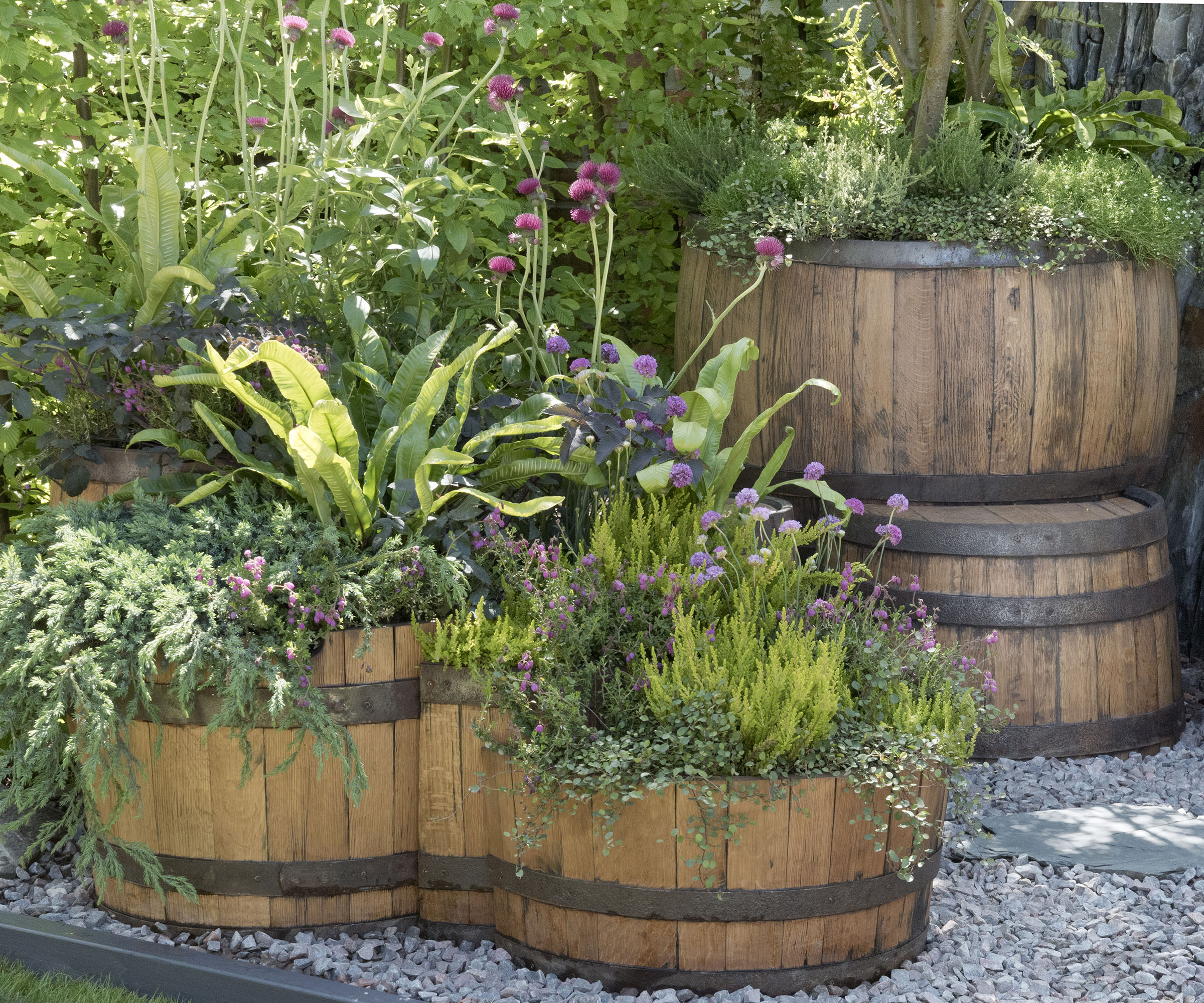
"If you’re not a confident DIYer, there are plenty of items you can repurpose as garden planter ideas," suggests Fiona Jenkins.
"As well as barrels, old drawers are great budget garden ideas for upcycling into planters. To raise the height, you could add a set of furniture legs to the bottom. You can buy these online or from DIY stores. It’s best to give repurposed wooden planters a bit of protection, so they can withstand the damp conditions outside."
"A light sand and a few coats of fence paint should do the trick. You’ll need to drill a few holes in the base for drainage and lining with landscaping fabric will boost the durability and help to retain the moisture in your compost," says Fiona.
12. Choose a raised trough for winter planting
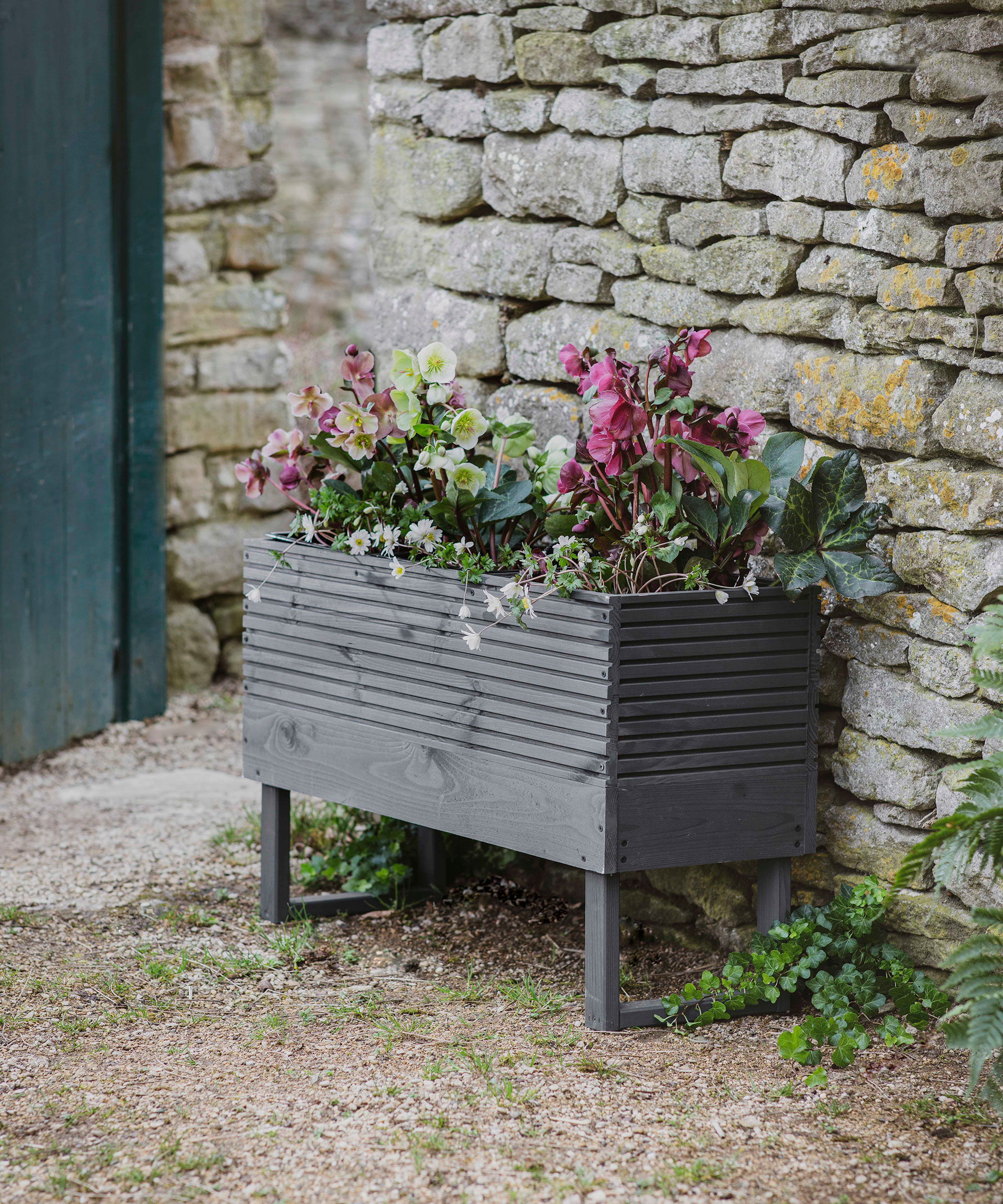
"Wood that has been dipped and treated is a practical and pleasing addition to your garden when it comes to autumn and winter planting. Even better if the container is a trough-style one on legs to lift your plants away from freezing or waterlogged soil to protect the roots. Smart grey goes with everything and is a look that doesn't date," says garden writer Sarah Wilson.
"Choose a style that's compact and lightweight so you can move it around easily if you need to. If you're planning on growing your own crops all year round, a trough is perfect for winter veg, and it will look equally good planted up with shrubs or winter flowers such as a mix of claret, pink and blush hellebores," says Sarah.
13. Make the right plant choice for a bright container display
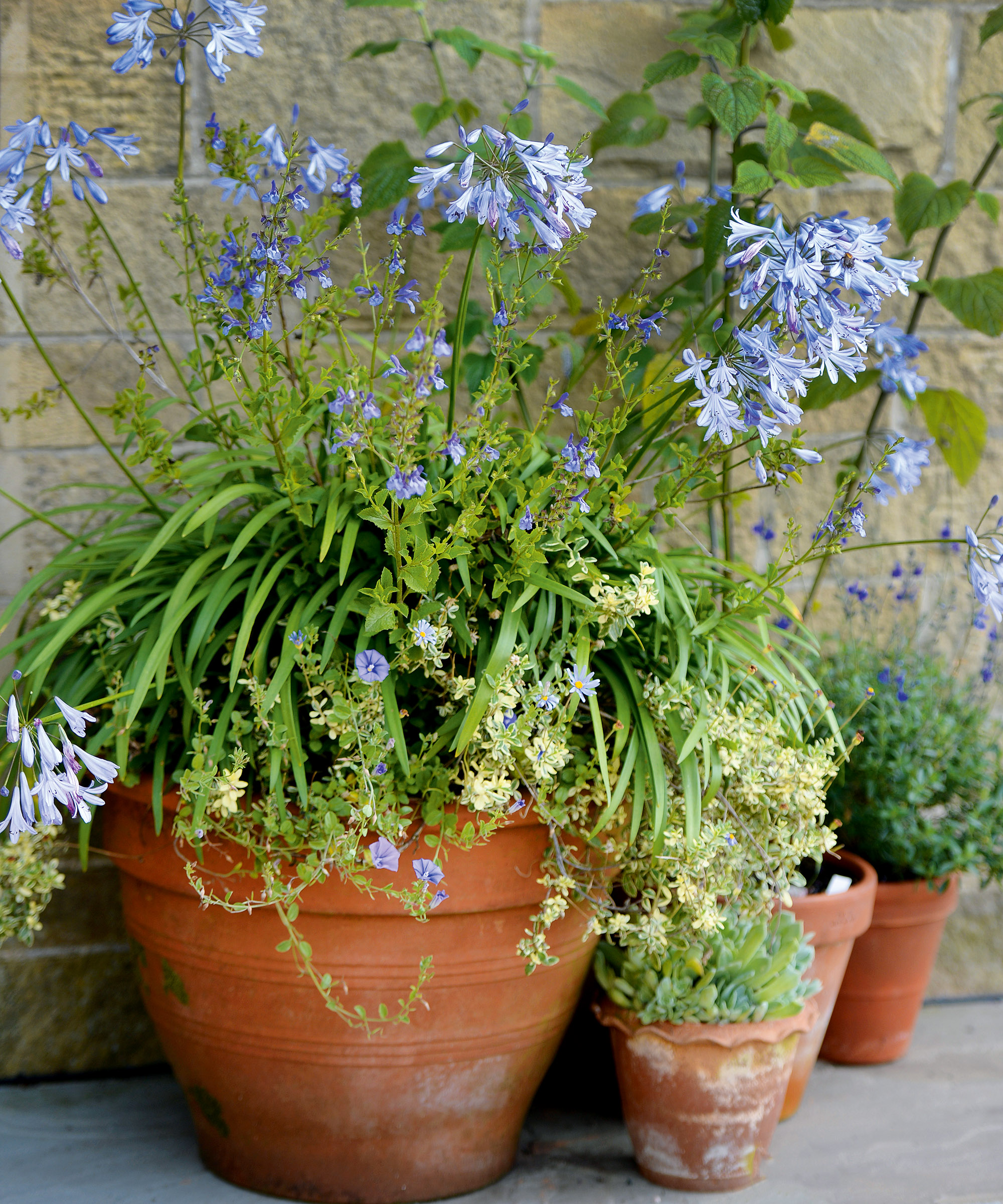
"What’s best for your planter really depends on its size. Large, deep planters can accommodate trees, shrubs and edibles while smaller planters are better for perennial and bedding plants," says Fiona Jenkins.
"If you want year-round colour in your planters, it’s best to go for vibrant evergreen shrubs like Coprosma repens 'Pacific Dawn' and Pieris 'Forest Flame'. Architectural plants such as Phormium 'Sundowner', Cordyline Pink Passion and Agapanthus Black Jack are great for adding height and screening patios. If you want to brighten a large summer planter for your patio planting, hydrangeas and fuchsias are good options," says Fiona.
14. Go for gold with metallic pots and striking grass
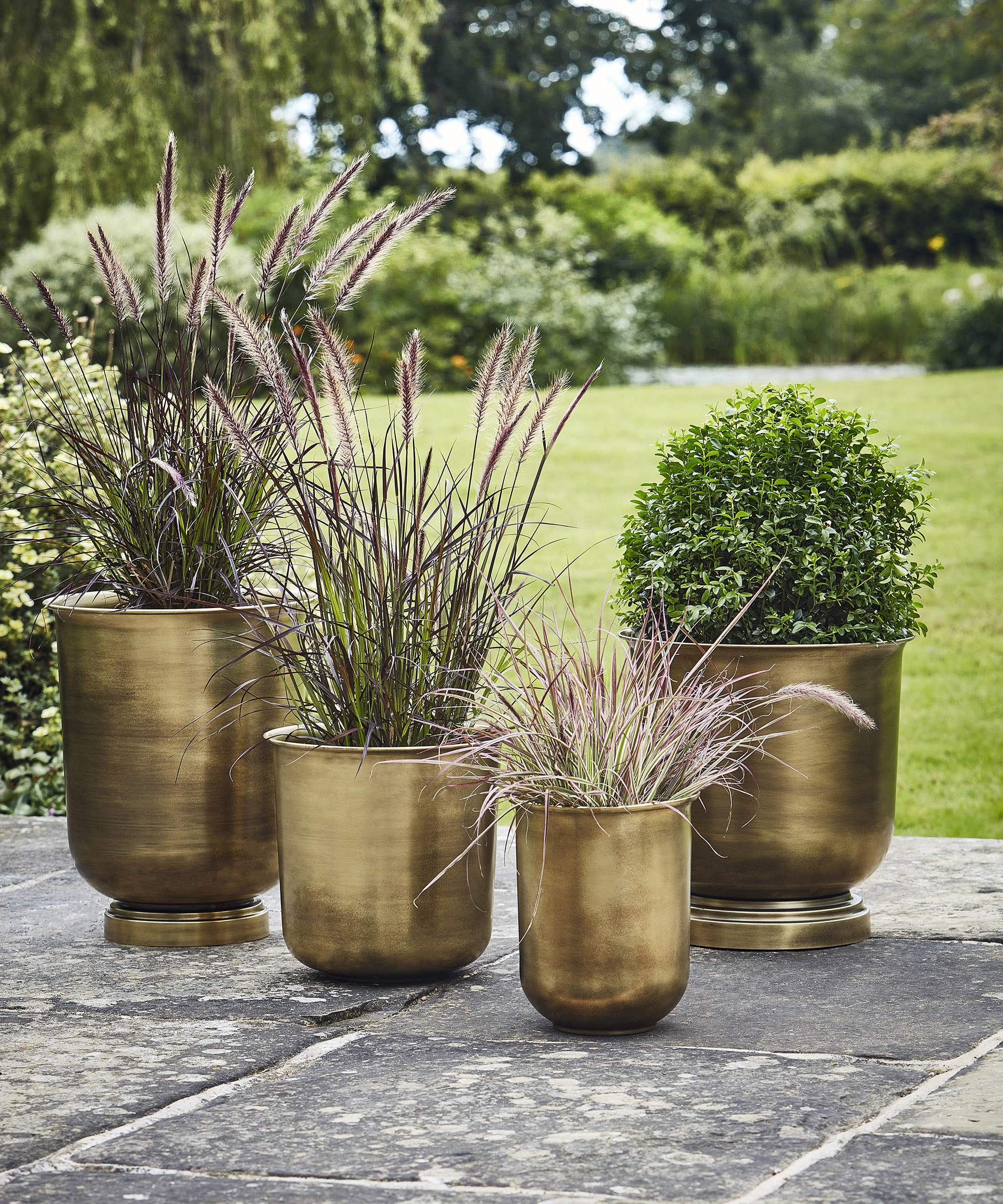
Ornamental grasses will add movement to your garden planter ideas. These elegant plants have arching plumes that can be really appreciated when displayed in containers.
'Tactile, verdant and bringing movement and late season interest to planting schemes, ornamental grasses are a must for any garden,' says garden designer Stuart Wallace of landscape designers Bowles & Wyer.
There are plenty of types of ornamental grass that work brilliantly in containers, but colourful burgundy red fountain grass (Pennisetum 'Rubrum') is a natural choice, filling the pot with its fountain-like foliage. From midsummer to autumn, the striking purple flowers create an architectural display.
Ornamental grasses are also a great choice if you're looking for some suitable garden screening ideas to add a touch more privacy to your outdoor space.
FAQs
What are the best plants for garden planters?
“Coreopsis lanceolata ‘Mango Punch’ is a fabulous container plant. It’s a compact, hugely floriferous perennial with a soft, peach-orange hue that will bloom all summer. Combine it with the marvellous Dahlia, 'Totally Tangerine' available at Sarah Raven in a container to create a stunning look," suggests plant expert Sarah Raven.
“Pelargoniums make wonderful container plants, particularly when arranged in a colourful group on the patio. Combining the bright and abundant flowers creates a magnificent Mediterranean garden look. You can also pick the foliage for long-lasting flower arrangements, which will evoke the most glorious scent."
“Viola cornuta 'Teardrops Apricot Purple Wing' will grow in containers for much of winter and spring. The variety of colours and hugely productive edible flowers have the most delicious perfume,” says Sarah.
Using planters to enhance your patio is a great starting point. Remember that you can also grow climbing fence plants in pots if they're given adequate plant supports or have a trellis attached.
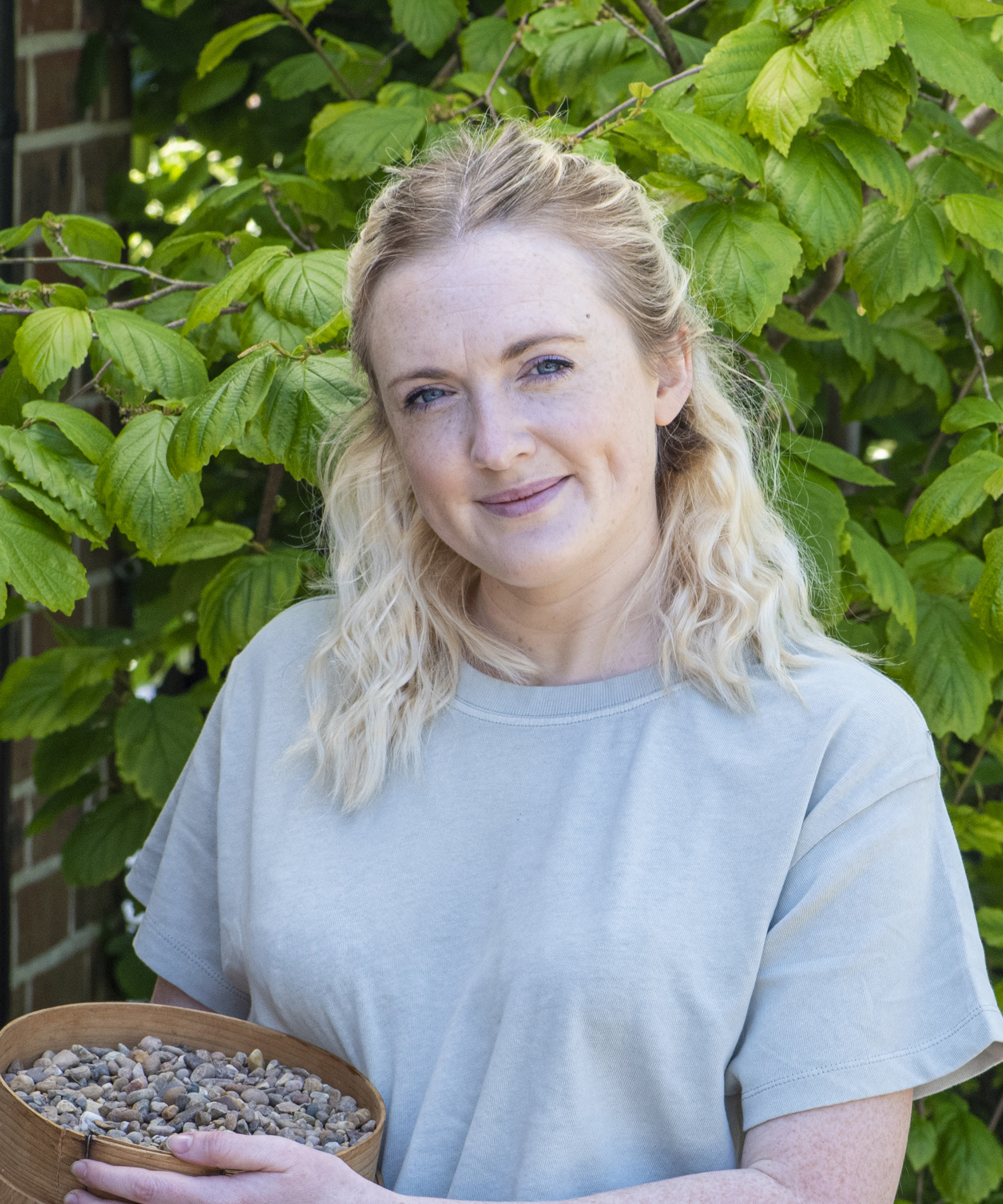
Teresa was part of a team that launched Easy Gardens in 2018 and worked as the Editor on this magazine. She has extensive experience writing and editing content on gardens and landscaping on brands such as Homes & Gardens, Country Homes & Interiors and Living Etc magazine. She has developed close working relationships with top landscape architects and leading industry experts, and has been exposed to an array of rich content and expertise.
In 2020 Teresa bought her first home. She and her partner worked alongside architects and builders to transform the downstairs area of her two bedroom Victorian house in north London into a usable space for her family. Along the way she learned the stresses, woes and joys of home renovation, and is now looking to her next project, landscaping the back garden.
- Beth MurtonEditor of Homebuilding & Renovating
